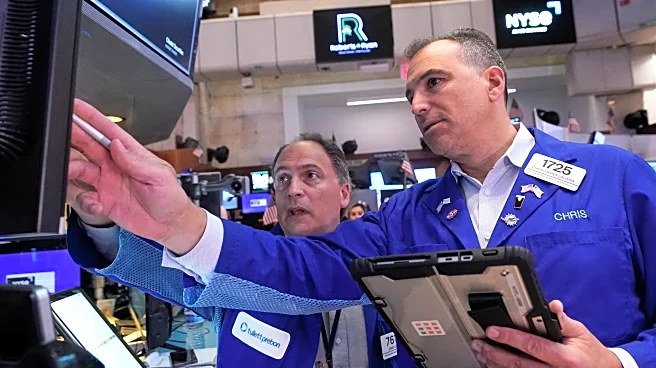What's Happening?
Small businesses in the United States have shown steady job and wage growth in September, according to the Paychex Small Business Employment Watch. The report indicates that hourly earnings growth for small business workers remained consistent at 2.68%, marking the 11th consecutive month below 3%. The national Small Business Jobs Index slightly decreased to 99.52, down 0.31 percentage points from August. Despite this, the Midwest region continues to lead in small business employment growth, with Ohio and Indiana reporting year-over-year job gains. The education and health services sector remains the top sector for job growth, followed by financial activities. Meanwhile, Homebase's September Main Street Health Report highlights a decline in workforce participation and hours worked, with the Northeast and Midwest experiencing the sharpest declines. The report also notes a significant drop in activity in the entertainment and hospitality industries, while wages continue to rise across all sectors.
Why It's Important?
The steady job and wage growth in small businesses is a positive indicator for the U.S. economy, especially amid uncertainties such as a potential government shutdown. Small businesses are crucial to the economy, often serving as a barometer for broader economic health. The consistent growth in the Midwest suggests regional economic resilience, which could influence economic policy and investment decisions. The rise in wages, despite slower activity, indicates a focus on maintaining workforce stability, which is vital for long-term economic sustainability. However, the decline in workforce participation and hours worked could signal underlying challenges that may affect future growth.
What's Next?
With the potential government shutdown looming, the release of the U.S. Bureau of Labor Statistics jobs report is uncertain, which could delay critical labor market data. This uncertainty may impact Federal Reserve policy decisions and economic forecasts. Small businesses may continue to prioritize stability over aggressive growth, focusing on maintaining their current workforce. Policymakers and economic stakeholders will likely monitor these trends closely to assess the need for interventions or support measures to sustain economic momentum.












